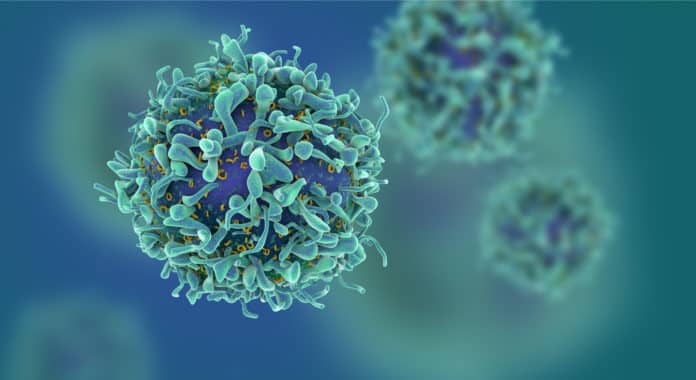Big Data analysis used for designing ‘Smart’ Cell for Cancer therapy
For ages, scientists have tried to find a way to kill cancerous cells while keeping the normal cells intact. The researchers of Princeton University and UC San Francisco have merged knowledge of Big Data and cell engineering to devise a strategy.
UCSF Cell Design Initiative and Center for Synthetic Immunology’s Wendell Lim, Ph.D., and colleagues used machine learning to comb through data sources that contained information on the proteins present in cancerous and healthy cells. They were searching for protein combinations that were present only on the cancerous cells and could be utilized to target them with specificity. The scientists took the help of a computational biologist at Princeton University’s Lewis-Sigler Institute for Integrative Genomics and the Simons Foundation’s Flatiron Institute, Olga G. Troyanskaya, Ph.D. in working on smart cells for cancer therapy.
Two papers were published regarding this strategy. One paper regarding the above information was published in Cell Systems on 23rd September 2020. Another paper about utilizing this data for cell therapy was published in Science on 27th November 2020.
Cell therapy so far
Lim, a professor of Cellular and Molecular Pharmacology and its chair, explained that cell therapy and most other cancer treatments are aimed at either blocking or killing something. The scientists wanted to enhance the subtlety and elegance of this decision made by a therapeutic cell by smart cells for cancer therapy.
Researchers have used the concept of Chimeric Antigen Receptor or CAR T cell therapy for a long time now. Here, a cancer patient’s immune cells are extracted and modified by cell engineering to enhance their ability to identify an antigen on a cancer cell surface. These engineered T cells are then restored into the patient. The microenvironment created by a cancerous cell around itself complicates this treatment and reduces CART cells’ efficiency.
SynNotch is used to program T cells.
The synNotch tool is used in smart cells for cancer therapy to configure the T cells using instructions. These instructions direct the engineered cells to scour for several antigens in place of just one as CAR T cells do.
Cancerous kidney cells were subjected to this treatment, where the researchers programmed T cells to eliminate them based on the presence of two antigens CD70 and AXL. While AXL is also expressed by healthy lung cells, CD70 is also expressed in healthy immune cells. But the programmed T cells aimed at the destruction of only cancerous cells carrying these antigens.
Troyanskaya said that advances in cell engineering and big data analysis of tumors had been brought together with this research. The capacity of computers in therapeutic cells integrated with machine learning techniques allows workable use of the rich data of genomics and proteomics that is currently available. This is used in smart cells for cancer therapy.
How synNotch works
Lim remarked that this research provides a blueprint for cell engineering and how to construct T cell classes for cell therapy to recognize any kind of feasible combinatorial pattern of antigens existing on a cancerous cell.
SynNotch can be used in intricate setups in engineering smart cells for cancer therapy. For instance, a cell has a synNotch receptor to recognize antigen A. As it does so, it triggers a cell to create a snNotch to recognize antigen B. The combination of these events results in the synthesis of CAR enabling antigen C recognition. A T cell that must detect all these antigens on a cell and destroy it is also produced.
Cancer cells with particular markers were targeted by the scientists who tested this smart cell cancer therapy on solid tumors of mice models. The T cells modified by synNotch identified the antigens carried by cancer cells and aimed to destroy them.
Lim explained that rather than scouring for one magic target, all of the data is used here. Distinct combinatorial trademarks of cancer cells are detected using all the available information on cancer cells. The possibility of this leads to a concept of ‘smarter cells’ that can utilize the intricacies of computational biology to have a genuine effect on combating cancer cells.



